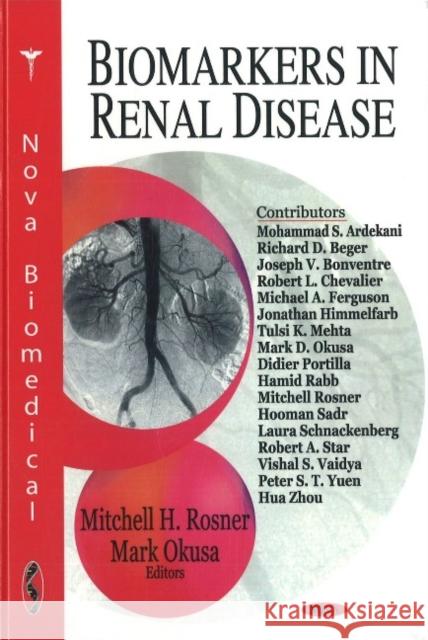Biomarkers in Renal Disease » książka
Biomarkers in Renal Disease
ISBN-13: 9781604561135 / Angielski / Twarda / 2008 / 151 str.
Advances in long-term improvement and outcomes of patients with kidney disease will require the use of novel biomarkers to identify patients at high risk for kidney disease and to diagnose kidney disease early for effective treatment. A biomarker is a substance found in the blood, body fluids or tissues that provides a measure of normal biological or pathological processes or response to pharmacological compounds or drugs. There are a wide variety of biomarkers including but not limited to mRNA, proteins and petides, and lipid molecules. In AKI, important pathophysiological processes such as inflammation, apoptotic and necrotic cell death and, tubule regeneration may be reflected in blood or urine. An array of candidate markers along with clinical information in long-term clinical studies with appropriate analytical methodologies will likely provide prognostic information. Despite well-known limitations, currently the most widely used biomarkers for the early diagnosis of CKD and AKI are proteinuria, serum creatinine and blood urea nitrogen. Most clinicians are aware that serum creatinine and blood urea nitrogen are poor biomarkers due to inherent characteristics of these molecules and handling by the kidney. Creatinine is secreted and urea nitrogen is reabsorbed by the renal tubules. Many endogenous substances interfere in the assay for creatinine. Serum creatinine and urea appear late after acute kidney injury and the serum levels in part depend on the generation (large or small body mass). Acute kidney injury is a non steady state condition thus serum creatinine and urea nitrogen will lag behind kidney injury. For these reasons new biomarkers are imperative. With knowledge of these limitations in use of current biomarkers and the lack of progress in reducing the mortality and morbidity from kidney disease, there has been a great surge of interest in identifying novel biomarkers with a particular emphasis on the early diagnosis











